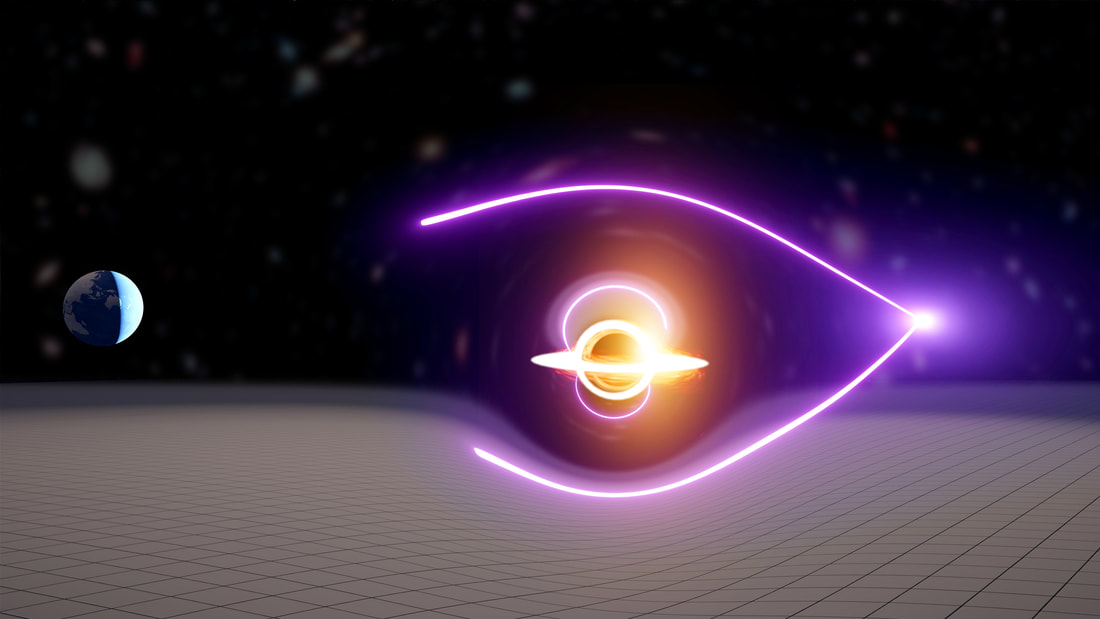|
Short gamma-ray bursts are extremely bright bursts of high-energy light that last for a couple of seconds. In many of these bursts, there is a mysterious material left behind: a prolonged ‘afterglow’ of radiation, including X-rays. Despite the efforts of many scientists over many years, we still don’t know where this afterglow comes from. In our recently accepted paper, we investigated a simple model that proposes a rotating neutron star—an extremely dense collapsed core of a massive supergiant star—as the engine behind a type of lengthy X-ray afterglows, known as X-ray plateaux. Using a sample of six short gamma-ray bursts with an X-ray plateau, we worked out the properties of the central neutron star and the mysterious remnant surrounding it. The model we used was inspired by remnants from young supernova. While remnants from short gamma-ray bursts and supernovae have many differences, the energy driving from a rotating neutron star has the same underlying physics. So, if the remnant of a short gamma-ray burst is a neutron star, it must have a similar energy outflow as a supernova remnant. In our study, we borrowed the basic physics from previous short gamma-ray burst models to predict the luminosity and duration of the X-ray plateau. For each short gamma-ray burst, the results suggested that the remnant neutron star is a millisecond magnetar: a neutron star with an extraordinarily powerful magnetic field. All known magnetars have a very slow rotation frequency; similarly, all observed neutron stars with millisecond spins have weak magnetic fields. This gap in observations isn’t surprising because the magnetic field of the star converts the rotational energy into electromagnetic energy. For a magnetar-strength field, this process happens on a scale from seconds to days – exactly the duration of most X-ray plateaux. This paper is the first attempt at estimating the source of X-ray afterglows using this kind of model. As the model matures and further data is collected, we’ll be able to make stronger conclusions about the source of X-ray plateaux and, if we’re lucky, discover what these mysterious remnants are. Written by OzGrav PhD student Lucy Strang – The University of Melbourne Direct link to online publications, a journal citation or any other websites https://arxiv.org/pdf/2107.13787.pdf Current status of paper (submitted/accepted/published) Accepted Acceptance and/or publication date Accepted 27/07/21, publication TBC
0 Comments
Leave a Reply. |
|
- Home
- About
-
Our People
- Chief Investigators
- Partner Investigators
- Associate Investigators
- Postdocs and Students >
- Professional & Outreach staff
- Governance Advisory Committee
- Scientific Advisory Committee
- Executive Committee
- Equity & Diversity Committee
- Early Career Researcher Committee
- Professional Development Committee
- Research Translation Committee
- OzGrav Alumni
- Research Themes
- Education and Outreach
- Events
- News/Media
- Contact Us
- Home
- About
-
Our People
- Chief Investigators
- Partner Investigators
- Associate Investigators
- Postdocs and Students >
- Professional & Outreach staff
- Governance Advisory Committee
- Scientific Advisory Committee
- Executive Committee
- Equity & Diversity Committee
- Early Career Researcher Committee
- Professional Development Committee
- Research Translation Committee
- OzGrav Alumni
- Research Themes
- Education and Outreach
- Events
- News/Media
- Contact Us


 RSS Feed
RSS Feed








